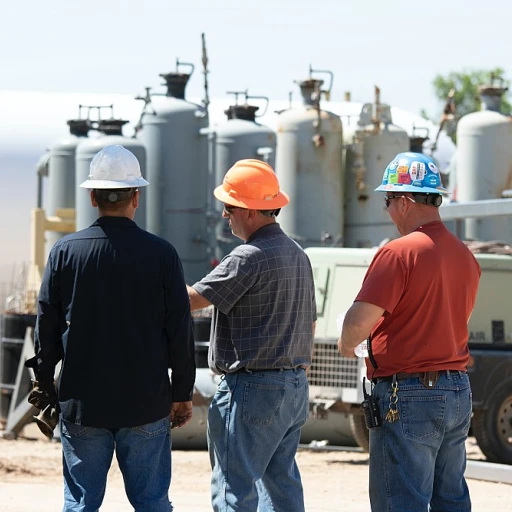
Understanding Copier Technology
Exploring the Foundation of Copier Technology
The mechanical copier has come a long way since its inception, with roots that can be traced back to the days of the printing press and the work of innovators such as Johann Gutenberg. Before the modern copier became ubiquitous in offices around the world, the concept of making copies was heavily reliant on manual efforts and rudimentary tools like the copying press. Fast forward to the era of technological advancement, and we see a shift towards more sophisticated methods of copying, anchored by the contributions of the steam engine inventor James Watt and others who contributed to industrial mechanization. The evolution of copier machines was notably influenced by the advancement of electrical duplication methods, which paved the way for the creation of the first office copiers. One cannot discuss copiers without mentioning the significant impact of "xerography," a term that reflects the process developed during the mid-20th century. Chester Carlson's invention of xerography marked a turning point, transitioning from the mechanical era to a more electrically driven method of producing copies. This breakthrough eventually led to the commercial triumph known as the haloid xerox copier, revolutionizing how documents were reproduced and disseminated. Understanding copier technology also involves recognizing the role of the digital age in enhancing efficiency and accuracy. Modern copiers are equipped with capabilities far beyond their predecessors. These machines not only replicate documents with precision but also integrate features such as scanning, printing, and even the ability to store information digitally. Innovations continue to shape copier technology, transforming it from a simple copying device to a multifunctional office tool. For businesses and individuals alike, the value of a reliable copier extends beyond mere document production, offering answers to complex organizational needs and presenting a bridge to seamless operational flow. As we delve deeper into the mechanics and evolution of copiers in subsequent sections, it becomes clear that their development has been integral to the broader narrative of technological progress. The exploration of this technology reveals not only a series of technical advancements but also insights into its role in shaping modern workplaces. For those interested in unlocking the potential of digital asset management, parallels can be drawn in how innovations reimagine efficiency and functionality in today's digital landscape.Key Features of Modern Copiers
Exploring Essential Aspects of Today's Copiers
Modern copiers have evolved significantly from their initial designs, offering an array of features that make them indispensable in both office and industrial settings. A crucial component of these machines is the ability to swiftly create accurate copies with minimal human intervention, reminiscent of Carlsons' early inventions.
Advanced copiers seamlessly integrate precision with speed. Not only do they produce sharp copies on a variety of paper types, but they also ensure uniformity in color and clarity. This technological leap mirrors the transformative impact of Johann Gutenbergs' printing press, which paved the way for mass communication. Just as the steam engine spearheaded industrial productivity years ago, these machines revolutionize information dissemination today.
Security and privacy remain paramount in the design of these copiers. Many models now come equipped with sophisticated privacy policies, addressing concerns about data leaks. Users can confidently engage with the technology, knowing that sensitive documents stay protected.
Moreover, the integration of user-friendly interfaces has made these devices accessible to a broader audience. Operators can efficiently navigate the complex systems through intuitive touchscreens, minimizing the learning curve often associated with technological advancements. This ease of use answers the rising demand for accessible technology in workplaces.
While these advancements mark significant progress, it's essential to consider the environmental impacts. Manufacturers increasingly focus on sustainability, reducing the carbon footprint associated with false printing or unnecessary sheet waste. Such considerations echo the industrial revolutions' sense of responsibility towards sustainable progress.
In summary, the key features of modern copiers reflect a harmonious blend of history and innovation, marking them as an indispensable tool in today's digital age. From the function of mechanical copiers to the ambition of becoming a commercial triumph akin to Haloid Xerox, the journey of copier technology is undoubtedly expansive and impactful.
Challenges in Copier Manufacturing
Overcoming Hurdles in Copier Production
Crafting efficient copiers is no small feat, and manufacturers face a myriad of challenges in the process. From the inception of the mechanical copier to the modern marvels we see today, the journey has been fraught with obstacles. Understanding these challenges is crucial for anyone interested in the evolution of copier technology.
One of the primary challenges in copier manufacturing is ensuring the commercial triumph of new models. The market is saturated with various machines, each promising to be the top choice for businesses. However, making copies efficiently and reliably requires overcoming technical and logistical hurdles.
Another significant challenge lies in the integration of new technologies, such as AI and advanced sensors, into traditional copier designs. This integration must be seamless to avoid disrupting the user experience. The introduction of AI into copiers, for instance, raises questions about privacy policy and data security, which manufacturers must address to maintain consumer trust.
Moreover, the environmental impact of copier production cannot be ignored. Manufacturers are tasked with reducing the carbon footprint of their machines, a challenge that involves rethinking materials and processes. The use of recycled paper and energy-efficient components is becoming increasingly important in the design of modern copiers.
Finally, the rapid pace of technological advancement means that manufacturers must constantly innovate to stay ahead. This requires significant investment in research and development, as well as a keen understanding of market trends and consumer needs. The legacy of pioneers like Johann Gutenberg and Chester Carlson reminds us that innovation is key to overcoming these challenges and achieving success in the copier industry.
Innovations in Copier Design
Innovations Shaping the Copier Landscape
In the realm of copier design, innovation is the heartbeat that drives progress. These advancements have dramatically transformed the way we perceive and utilize copiers today. The evolution from mechanical copiers to sophisticated machines is akin to the shift witnessed between the steam engine era and the dawn of digital technology. The remarkable journey of the copier, reminiscent of Gutenberg's printing press invention years ago, has seen inventions like the copying press making significant strides. The amalgamation of technology and creativity has ushered in groundbreaking solutions, enhancing copier efficiency and functionality. Modern copiers are no longer constrained to merely duplicating documents. They encompass multi-faceted functionalities, often combining scanning, printing, and faxing abilities within a single framework. This integration reduces reliance on multiple devices, aligning with commercial needs and promoting eco-friendliness by minimizing paper usage. Another fascinating innovation is the introduction of smart technologies that exploit artificial intelligence to facilitate advanced features, such as intelligent reading and sorting of documents. The role of AI in reflecting true and false field selections in documents or generating precise copies has grown considerably, transforming copiers into decision-support tools. These advanced copiers can now handle a plethora of tasks. For example, they can produce mass copies with exceptional quality, even deploying features that resemble reading passages in an IELTS setting or mimicking an answer sheet with pinpoint accuracy. Furthermore, today's copiers are poised for interaction in environments demanding higher data protection standards, incorporating robust privacy policies that cater to general reading content and sensitive information alike. As we navigate through these technological shifts, the legacy left by chester carlson and haloid xerox remains significant. Their pioneering spirit set the foundations for what is now a thriving landscape where questions about copier capabilities yield impressive answers. The innovations continue to address the dynamic needs of businesses and individuals alike, ensuring copiers remain a top contender in the ever-evolving world of office machinery. This relentless pursuit of perfection and convenience illustrates how copiers have evolved from basic machines to technological marvels, echoing the journey from james watt's steam engine to contemporary cutting-edge solutions.The Role of AI in Copier Development
The Intersection of Artificial Intelligence and Copier Development
The infusion of artificial intelligence (AI) into copier technology is revolutionizing the way we perceive and use these machines. Although mechanical copiers have a rich history that dates back to innovations by figures like Johann Gutenberg and the haloid xerox revolution, AI brings an element of advancement never seen before. AI-driven copiers,true to their purpose, enhance efficiency by quickly providing answer sheets for IELTS reading exams and more.
The primary role of AI in modern copiers is to streamline the copying process, ensuring high precision. AI algorithms can analyze reading passages and identify specific content patterns, which helps in creating consistent and reliable copies. This is especially useful when dealing with large-scale copying tasks, such as those required by commercial triumphs or united nations operations.
Furthermore, copier machines equipped with AI features can anticipate the needs of the user by processing data from past making copies. Through this adaptation, these copiers answer frequently asked questions about what's required, thus allowing for smarter and more tailored operations. The true false scenarios found in IELTS reading sections are just one example where AI proffers a major efficiency benefit.
But, like steam engines and the inventions that came before, AI in copiers is not without its challenges. The privacy policy surrounding data handling raises questions, yet the commercial advantages of implementing AI features offer true progress toward making copiers better at tabulating making copier tasks, managingboxes answers, and interpreting sheets.
As AI continues to evolve, it will likely integrate further into copier technology, promising a future where specializations expand beyond what Chester Carlson's original invention could have ever predicted. The continued development of AI in copier technology isn't just about enhancement. It's about shaping an easier, more effective experience for users worldwide.












